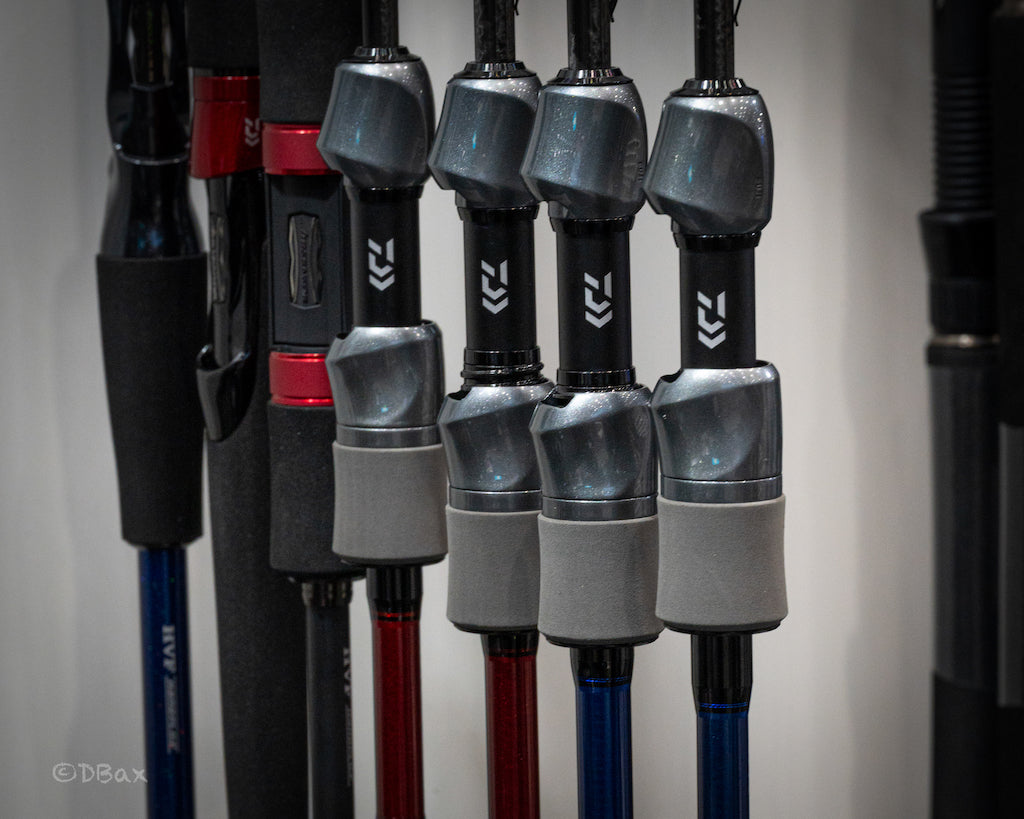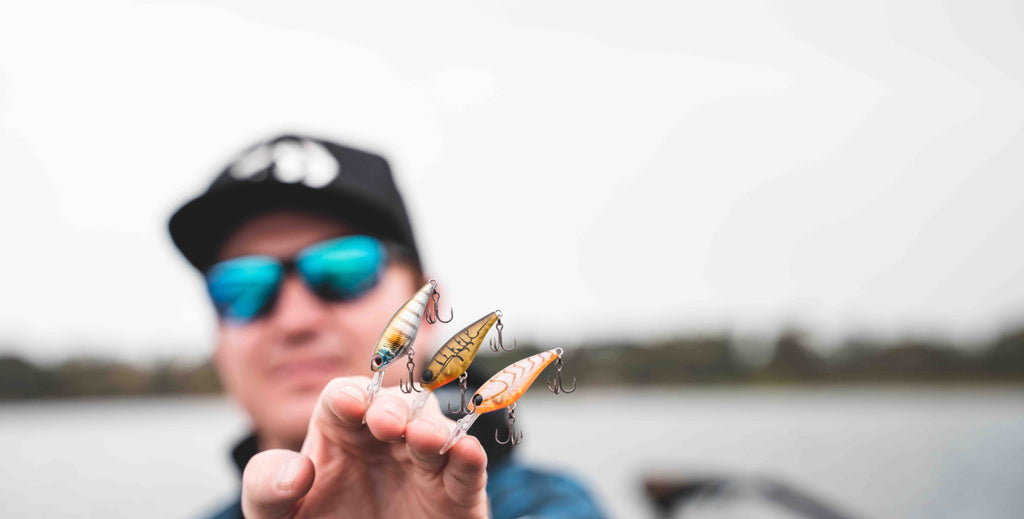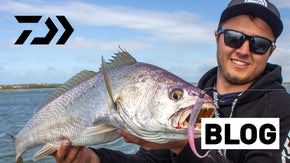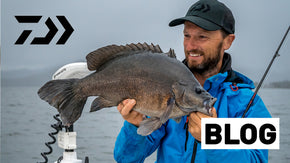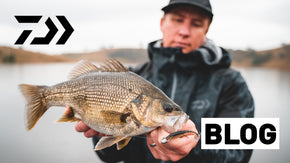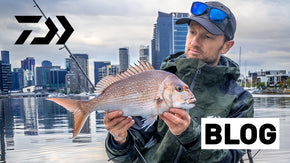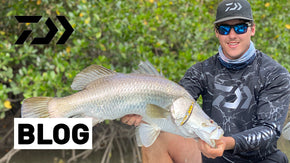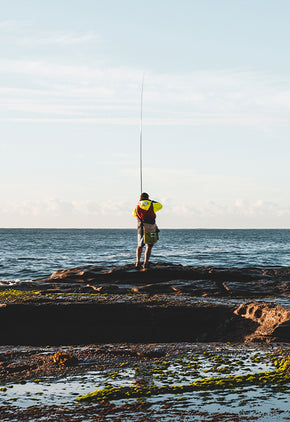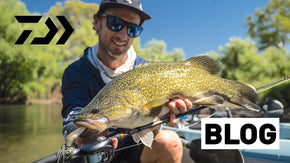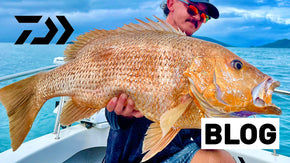Posted 05th May 2023
How to Catch Garfish: A Complete Guide


By Robert Thornton
We all know how popular garfish are as a target species in our southern states. Each year thousands of anglers will line up along piers and rock walls with light spin rods in hand, lobbing handfuls of their preferred berley into the water intently watching their floats for any movement.
What many might not realise, though, is that these incredibly relaxing and kid-friendly techniques work well in more northern waters as well! There are different garfish species in these warmer latitudes, however they can still be caught and eaten in similar ways to their southern counterparts.
Garfish are collected Australia-wide for their eating qualities and as fresh bait (live, frozen whole, or cut into pieces), and even just caught and released for a bit of light-hearted sport.
This blog will look at the different gar species we have in Australia, as well as how to find them, prepare your tackle, and finally how to catch them!
Let’s first look at the different garfish residing in our waters.
Gar Family
The garfish variety most familiar to anglers is the southern garfish (Hyporhamphus melanochir), which exist across the bottom of the continent (including in Tasmania) from the NSW South Coast to southwestern WA. They’re often targeted in the cooler months by-landbased anglers, however they can be berleyed up in most places throughout the year, including in sheltered bays, river mouths, and even offshore.
A little further north, eastern garfish (Hyporhamphus australis) can be found in most sheltered waters on the East Coast from about Eden up to about Moreton Bay in QLD. These guys are more seasonal in their habits, generally targeted over summer in the south and autumn further north.
River garfish (Hyporhamphus regularis) exist in two populations in the middle latitudes of the East and West coasts and tend to prefer living in estuaries and coastal lakes. River gars tend to be targeted through winter.
Snub-nosed garfish (Arrhamphus sclerolepis) are found on the East Coast from about Central QLD to Sydney, and inhabit estuaries and frequently push up into freshwater. They are also found in self-sustaining populations behind dam walls. They provide food for larger stocked fish in these lakes, and can be easily fished for from the bank.
The last species we’ll mention is the northern river garfish (Zenarchopterus buffonis), which inhabits coastal regions and estuaries across the top half of Australia. This species isn’t commonly targeted by anglers, but will respond to most popular gar techniques.
There are more gar species, however these are the best-known of the family Hemiramphidae, and as you can see there are garfish species around the entire Australian coast, as well as up many of the rivers and creeks.
 Garfish Tackle
Garfish Tackle
Gearing up for gar is a straightforward affair, with the bare essentials being a long, light spin rod set up, pencil style float, and a light trace terminating with a size 10-12 long shank hook.
Daiwa’s 22 CROSSFIRE XT 2000/702ULFS pre-mounted combo is a perfect inexpensive setup for a bit of landbased garfishing, with some 6lb J-Thread Nylon ideal for mainline. Light braided mainline is also fine. Realistically, any light spin rod and reel is suitable, but it helps to have a long, soft blank to keep the small hooks from pulling out of the gars’ soft mouths.
Small pencil or waggler style floats are popular for gar chasers and are a useful tool for keeping your bait up near the surface where garfish like to feed. It also makes this a visual style of fishing, and very engaging for kids. Some anglers will rig these fixed, however most prefer to rig it with a stopper on the mainline, which can either be bought or made from a small length of cotton wool or monofilament tied around the mainline.
Underneath your float you’ll need a light trace about a metre long, which is usually connected by a small swivel, with 3-4lb fluorocarbon the best stuff for the job. J-Thread Finesse FC makes great trace material for many small but sharp-eyed species.
Pinching split shot onto the trace is a good way to delicately balance the float, as they can be simple added or removed as needed. You may need to do some trial and error to balance your float. You want it to be easily visible from above the water, but sensitive enough for these small fish to pull it down without feeling too much resistance.
On the business end is the all-important hook, with size 10-12 long shank hooks the most popular design for this technique. Long shank hooks make hook removal easy, which is important when there’s a hot bite and you need to get your rig back in the water!
Gar fishing isn’t just a bait anglers’ game though, with small jigs, soft plastics and even flies all effective techniques for these mini marlins. The trick is to keep everything as small as possible, and as lightly weighted as you can get away with, as presentations need to stay near the surface for the gar to find them. Don’t worry if you can’t cast these rigs very far, because when garfish are on the job, they’ll school up right next to where you’re standing, whether you’re on a boat, pier or rock wall. If there’s something for them to eat, they shouldn’t disappear in a hurry.
 Garfish Baits, Lures and Flies
Garfish Baits, Lures and Flies
Gar are an omnivorous forager, so bait selection is usually pretty simple. The key is to keep the bait small, with 1cm in all dimensions a good starting size.
Small pieces of prawn, pipi, squid, sandworm, raw chicken and fish flesh are popular baits, but so too are whole maggots, dough and bread pinched onto the hook.
If you’re feeling sporty, small soft plastics like Bait Junkie 2.5 Inch Minnows and 2.5 Inch Grubs rigged on a #4 Bait Junkie Finesse Jighead (1/30 or 1/20oz) will catch gar if they’re in an aggressive mood. Using a pair of scissors to trim down your soft plastics can help a lot, especially if they’re having trouble getting the plastics in their mouths.
Bait jigs are another artificial presentation that can work really well, and are popular amongst anglers collecting garfish for bait offshore.
Fly fishing is also effective for most gar species, with small insect and worm patterns in size 10-14, wet or dry, worth a try for these opportunistic feeders. If they are feeding on bread, or you have bread in your berley trail, bread pattern flies can also be successful.
Garfish Berley
Speaking of berley trails, this is arguably the most important thing for gar fishing, as this is what brings the fish to you, and importantly, keeps them there. Popular garfish spots like piers and rock walls will often have other anglers on them setting their own trails, so busy areas are a good sign when looking for gar.
Berley can be bought pre-mixed or simply made at home. You’ll want at least small bucketful of berley, and you want to throw in a handful every 10-15 minutes, or fill and deploy a small berley cage periodically.
A popular berley mixture is either breadcrumbs or pollard with a bit of tuna oil. The dust-like consistency of this mixture means the gar can’t fill up on it, and they’ll be more likely to chomp down a bait when it comes into the trail. The oil sticks the grains together to make throwing handfuls of it easier, and creates a slick on the water’s surface that can travel a long way, bringing in garfish from afar.
If that sounds like too much work, some anglers will even just soak a rag in tuna oil and hang it in the water, letting the waves and current disperse the scent through the water.
However you choose to berley up your garfish, remember that you want to stick to the adage of ‘a little bit, often’, as too much too often will end up feeding them, and too little will see them losing interest in the area and moving on.
Get Your Gar On
Whether you live in Australia’s southern, middle or northern regions, it’s highly likely that you’ll be able to find and catch garfish near you! It’s a fun and relaxing way to gather a feed or a few baits for bigger fish, plus it’s great for teaching kids the very basics of fishing. Watching and waiting for that float to dip ignites a primal joy in anglers of all experience levels, and once you get the basics down, you can even branch out and target them with more advanced techniques like lure and fly.

Chasing Garfish in Victoria
By Jesse Rotin
Watching a float, waiting for that moment when it tilts up and then under is highly addictive in my eyes, especially when there’s a tasty garfish on the other end. Garfish tend to feed on weed and tiny crustaceans drifting through the water column, hence why suspending your bait using a float works so well.
Nice Rig
Rigging for garfish couldn’t be any simpler, all you need is a pencil float, some split shot sinkers to suit and either a size 10-12 long shank hook and you’re in business. Garfish are quite a small fish and finesse is best, so it helps to keep your floats small to aid in detecting even the slightest of bites. Many anglers weight their floats with enough split shot to keep the float upright, this does help when they’re biting timidly. However, I do the opposite and use very little weight, it may take the gars a bit more to pull the float under but this allows my bait to drift around far more naturally then being anchored to the float. Setting the depth of your bait can vary, depending on the depth of water you’re fishing. I run a dropper of around 1.5 metres but will lengthen this to see how the fish react throughout the session.
Getting Tackled
Light spinning outfits are more than enough to handle even the biggest of gars. 6-10lb mainline is run of the mill, either braid or monofilament. If you run braid then I recommend using leaders no less than 6lb, the reason for this is that gars fight erratically, almost like baby marlin at times and can quite easily twist themselves around the leader. Using leaders this size and up will make it easier to untangle them, if they do get caught up. I’m a big fan of Daiwa’s J-Thread Nylon and run this off the reel all the way to the hook. It’s quite supple and is a strong favourite of mine when it comes to float fishing as the line sits on the surface, never interfering with my float.
My Gear List
* TD Hyper 763LXS/23 Exceler 2500
* 6lb J-Thread Nylon
* Pencil float and BB split shot(s)
* Size 10-12 Mustad Fine Worm/Daiichi Long Shank-R
The Bait
Fresh is best when it comes to bait selection, and at times baits which are alive can be even better. Pippies, pilchard, silverfish and dough are perfect. However, without a doubt my most favoured bait would have to be live maggots, the wriggle from these little guys drive the gars mad and they can’t resist.
Keep em’ Keen
A light but steady berley flow will attract gars from far and wide plus keep them interested in your offerings. Bait scraps, berley pellets or just simply old stale bread soaked in water will be plenty to keep them keen.
Time to Eat
I love the taste of fresh garfish and if you haven’t tried them then I can highly recommend it. I will admit though there have been times where I’ve been torn on whether to eat them or use them for bait, as they can be deadly on species like snapper, mulloway and kingfish. I’ll leave that decision up to you.

 Contact Us
Contact Us Blog
Blog About
About
